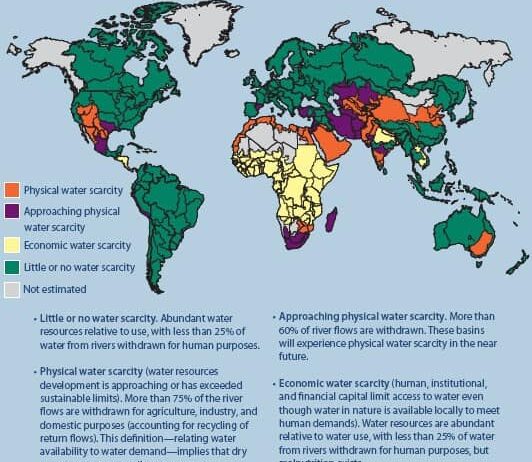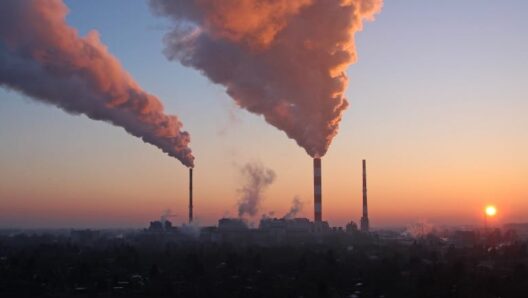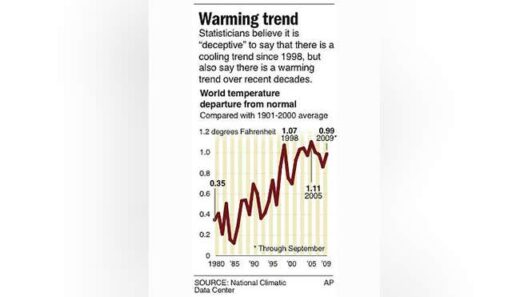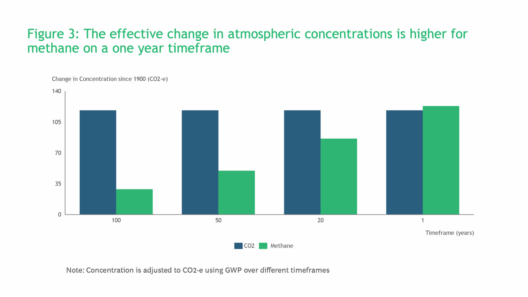Water is the essence of life, a fundamental resource that sustains ecosystems, agriculture, and human civilization. Yet, as climate change progresses, the increasing prevalence of droughts accentuates a troubling trend: the relentless march toward water scarcity. The phenomenon of water scarcity, exacerbated by global warming, transforms vibrant landscapes into barren dust bowls, devastating communities and ecosystems alike. Various factors contribute to this escalating crisis, including alterations in precipitation patterns, rising temperatures, and human activities. Understanding the intricate interplay between these elements is crucial for addressing the looming challenge of water scarcity.
One common observation is the visible drought-induced transformation of once-fertile regions into parched wastelands. Areas that once basked in the sun, boasting lush greenery, now often feature cracked earth and despairing residents. Droughts occur when there is a significant deficiency in precipitation over extended periods, wilting crops and diminishing surface water supplies. Although droughts are natural phenomena, the severity and frequency of these events have surged in recent decades. The Intergovernmental Panel on Climate Change (IPCC) reports a tangible increase in the variability of rainfall patterns in many regions due to climate change, resulting in prolonged dry spells punctuated by intense rain events, which do little to alleviate the systemic issues at play. This inconsistency fosters an environment of unpredictability, complicating water management and planning.
Moreover, it is essential to recognize that global warming does not merely increase the likelihood of drought; it also elevates temperatures, which leads to escalated evaporation rates from soil, rivers, and reservoirs. This process further diminishes the already scant water available for both human use and the surrounding flora and fauna. As temperatures rise, the atmospheric demand for water intensifies, causing even more rapid depletion of existing water supplies. Consequently, the accelerating cycle of evaporation and depletion exacerbates the adverse consequences of climate change.
The implications of water scarcity extend beyond immediate environmental impacts; they reverberate through economic, social, and political landscapes. In agricultural sectors, water scarcity translates into reduced crop yields and livestock productivity, jeopardizing food security. Farmers, especially in developing regions, find themselves staring down a perilous dilemma: invest in expensive water-saving technologies or risk losing their livelihoods to relentless droughts. Such economic pressures can drive farmers to migrate to urban areas, exacerbating urbanization challenges and leading to overcrowding, increased poverty, and social unrest.
Furthermore, the effects of water scarcity frequently disproportionately affect marginalized communities. In many regions, access to clean water remains a privilege rather than a right. When faced with dwindling supplies, wealthier communities often hoard resources, leaving insufficient access for those with fewer means. This inequity not only perpetuates cycles of poverty but also incites conflict over ever-scarcer resources. Water-related disputes have become increasingly frequent, with countries bordering transboundary rivers grappling with legal and diplomatic challenges. Strain on these shared resources can escalate tensions, threatening peace and stability in volatile regions.
Amid this dire scenario, it is vital to recognize the role of human activities in amplifying the impacts of global warming on water scarcity. Deforestation, urbanization, and poor water management practices exacerbate the crisis. Forests play a crucial role in regulating the water cycle, helping maintain local climates and controlling runoff. Their removal significantly impairs this balance, leading to reduced rainfall and increased vulnerability to drought. Moreover, sectors such as agriculture and industry often prioritize short-term gains over sustainable practices, depleting aquifers at alarming rates and rendering them unviable for future generations.
Addressing water scarcity requires an integrated approach that encompasses sustainable resource management, innovative technology, and community engagement. The adoption of water-efficient technologies, such as drip irrigation in agriculture, can mitigate water use while maximizing crop yields. In urban settings, rainwater harvesting systems and wastewater recycling can help alleviate pressure on freshwater sources. Equally important is promoting policies that enforce stricter regulations on water usage and incentivize conservation efforts.
Education and community involvement are paramount in fostering a culture of stewardship toward water resources. Promoting awareness of the impacts of climate change on water availability can galvanize action, encouraging individuals and communities to adopt more sustainable practices. From simple measures, like fixing leaks and reducing consumption, to participating in larger initiatives aimed at restoring ecosystems and protecting watersheds, collective action is essential in combatting the escalating crisis.
Climate change’s impact on water scarcity is not merely an environmental concern; it is an intricate tapestry interwoven with economic, social, and political threads. The transformation from drought to dust encapsulates a broader narrative of degradation and vulnerability that many communities are facing. The urgency of the situation cannot be overstated. Combating water scarcity demands a multi-faceted strategy that incorporates sustainability, innovation, and inclusivity, paving the way toward a more resilient future. Acknowledging our shared responsibility in this crisis is essential in fostering collaboration towards effective solutions and ensuring that future generations inherit a world where water is both accessible and sustainable.







